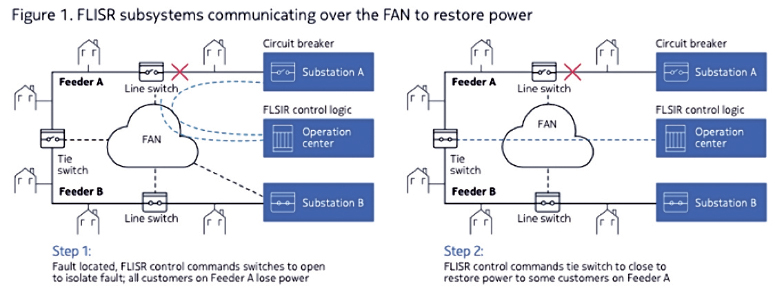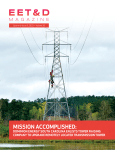Governments around the world are working to meet international climate change treaty obligations under the Paris Accords. These legally binding obligations are now driving energy policy around the world.
One of the notable examples occurred in 2022 when U.S. President Biden signed the Inflation Reduction Act (IRA), which intends to enable the U.S. to meet its Paris Accords obligations and ensure its future energy security.
The IRA provides $369 billion over the next decade to fund programs and incentives intended to accelerate the transition to a clean energy economy. It will drive significant deployment of clean energy resources, including the rapid development of transmission lines and the transformation of the distribution grid. Many other countries around the world are making similar investments in an electrified future.
Although much of the press attention has focused on renewable energy resources like wind and solar and the adoption of technologies such as EVs, induction stoves and heat pumps, the foundation for the wide-scale electrification of our energy infrastructure will be a smart electrical grid.
Distribution system operators (DSOs) will need to rely heavily on digital technologies to monitor, protect and control the grid. Especially with the introduction of distributed energy resources (DERs), grid control will require automation in thousands of distribution substations and feeder circuits, as well as the ability to monitor hundreds of thousands of intelligent electrical devices (IEDs) with local intelligence and decision capabilities to control the grid in real-time.
This will only be possible using a state-of-the-art communications network.
Converged FAN communications
Field area networks or FANs are the networks that connect feeder circuit domains and often low voltage distribution substations. They have been lagging behind the advances in wide area network (WAN) communications generally on the digitalization journey.
Now DSOs will need to adopt the most recent networking technologies to meet the ambitious climate goals reflected in government policies like the IRA. Essential for the digital transformation of the smart grid, FANs will need to scale and expand their footprint with new wireless access and optical networking technologies to connect distribution substations and field IEDs for distribution automation.
Transmission substations are for the most part already connected by fiber optics and currently use IP multi-protocol label switching (IP/MPLS) networks to communicate, yet there are tens of thousands of distribution substations that remain unconnected.
Where fiber plant exists, it can be used for FANs. Otherwise, to economically reach these substations, as well as tens of thousands of IEDs along feeder circuits, robust wireless access will be required. Among the wide range of wireless access technologies, the prevalent choice today is LTE.
Traditionally, the performance and security requirements for monitoring, controlling and protecting the distribution network could not have been met by either packet or wireless networks. Latency, synchronization, service segregation, availability and resilience all demanded the kinds of critical communications services that best-effort wireless networks could not meet.
This changed with the introduction of IP/MPLS, which enabled packet networks to meet these critical performance metrics. As a result, it has been widely adopted over the last decade by utilities worldwide, carrying over a mix of optical systems, microwave links and even T1 leased lines.
By extending IP/MPLS over LTE, utilities can now build a converged FAN with the same mission-critical networking capabilities in WAN to support a wide suite of distribution automation applications.
Improving grid reliability with FLISR
There is a long list of use cases for the distribution automation capabilities that a converged FAN can make possible. Fault location, isolation and service restoration (FLISR) is one of the critical use cases and illustrates clearly how a converged FAN can be employed.
As electrical systems become our primary source of energy in industrial, transportation, public works and domestic applications, the impact of service interruptions is becoming more critical. According to a U.S. Department of Energy study, FLISR can reduce the number of customers interrupted (CI) by 55% and customer minutes of interruption (CMI) by 53%.
How FLISR systems usually work is that a line sensor, such as a SCADA RTU or an AMI sends a message to the FLISR controller to indicate service interruption. The controller is usually integrated with the distribution and outage management systems (DMS and OMS).
Together, they automatically locate the fault and open the line switches or circuit breakers to isolate the section. Where the distribution topology allows, they can then route power to downstream users and connect them to a different substation.
In Figure 1, the topology has a connecting circuit between Feeders A and B, controlled by a Tie Switch, which allows the utility to bypass the fault so that only the subscribers on the affected circuit lose power.

Figure 1: FLISR subsystems communicating over the FAN to restore power
It is important to note that if the communication paths to the line switches are broken, FLISR fails to restore power to the downstream customers on Feeder A. It is also important to note that as the load level on Feeder B increases with the addition of the downstream customers on Feeder A, voltage levels will naturally drop, sometimes below 5% of the nominal voltage. This can result in brownouts and failure of some electro-mechanical equipment.
This can be remedied by the advanced distribution management system (ADMS) using volt-VAR optimization (VVO), which automatically adjusts the voltage regulator position and load tap changer position. Again, however, any break in communication and VVO will fail to maintain the required voltage level.
Thus, for FLISR subsystems to function properly, communications have to be maintained between distribution automation applications such as VVO, AMI, SCADA and line sensors. This can be achieved using a FAN with a fully redundant end-to-end communication path using either the utility’s own private wireless link and/or separate links over a public carrier’s wireless network. A dual-homing wireless field router equipped with two SIMs ensures that if the primary wireless circuit fails, the secondary circuit can ensure the service is maintained.
The FAN requires a backhaul network to connect with the wireless core software hosted in the data center. Therefore, multi-fault network resiliency in the FAN backhaul network is also important.
FAN backhaul is very often a use case for a utility’s mission-critical WAN. The WAN should already be capable of intelligently re-routing any communications paths that might be affected by the same event or, even, coincidental events associated with the original service outage, such as a storm.
The wireless core system itself also needs to be architected for hot redundant duplex operations, so that in case of core equipment failure, switchover to a standby core does not create issues with latency or synchronization in the distribution automation systems being used by FLISR.
It is also important that the utility operations center, which is the nexus for all grid operations including the sub-systems for FLISR, be geo-redundant. Each center should have redundant headend routers connecting the center to the FAN. This results in a FAN architecture that could look like Figure 2.

Figure 2: Geo-redundant protection with multiple headend routers
Fire mitigation strategies
As climate change worsens another important use case in some regions is fire mitigation. Increased temperatures, longer droughts and higher winds are affecting the condition of many forests and grasslands, making devastating fire events more likely.
While it is estimated that only 3% of wildfires are started by electric distribution lines, the fines and associated liabilities levied against the responsible utilities can be significant.
The most common causes of electrical wildfires are downed conductors. Often fallen trees are the cause, although other failures can occur. Vegetation can also contact lines causing arcing, especially if a tree branch crosses two conductors. Although rare, conductors can also come in contact and aging equipment can fail, generating arcs and sparks. Thus, the primary means of mitigating fire risk is to perform preventive maintenance to the equipment along utility lines as well as vegetation management.
There are also several technologies that can be employed to enhance system protection and minimize or even eliminate the threat of fire events. The key issue is to quickly detect fallen conductors and trip the power or, in the most at-risk areas, sense breaks and trip the power before the conductor hits the ground.
Detection is, unfortunately, not always straightforward. Many downed lines fall on poorly conducting surfaces, creating high-impedance faults (HIFs) that generate very little fault current. Reports from the U.S. cite a range of 30-50% of HIFs that go undetected.
Most power distribution systems rely on over-current protection such as relays, reclosers and fuses, which will not be tripped in the case of an HIF. Utilities operating in areas where there is a high risk of wildfire, rather than risk an undetected HIF, will close down high-risk power lines and re-route around the area. This is sometimes a good operational practice, but not always possible or practical, often taking days to restore power to the line.
Systems are emerging to improve detection capabilities. These include monitoring interharmonic energy on a feeder to detect arcing or monitoring the ratio of negative- to positive-sequence transfer.
One of the most promising technologies being used by a California utility is to monitor synchrophasor measurements for voltage, current and phase angle of all conductors on the power line. Phasor measurement units (PMUs) provide data to a phasor data concentrator (PDC) that analyzes the data to look for HIF signatures. Upon detection, an IEC 61850 GOOSE message is sent by the PDC to trip the power on the suspected line, in some cases, even before it can hit the ground.
This application requires high-bandwidth communications to move the phasor data from all parts of the grid to the PDC and, in response, send the IEC 61850 GOOSE messages to the circuit breakers/reclosers.
Communications must have very low latencies and low jitter. Using IP/MPLS over optical fiber easily meets these communication tolerances, but the cost is significant if the optical infrastructure isn’t already in place.
LTE/5G is a more low-cost solution that can meet the same tolerances and is less subject to some of the same hazards that can cause HIFs in the first place. Where optical infrastructure is in place for a subset of distribution lines, a hybrid IP/MPLS fiber and LTE/5G converged FAN will be the optimal solution.
Converged multiservice FAN
Traditionally IEDs such as line switches, voltage regulators and SCADA RTUs were often connected using application-specific field area networks. Each FAN would have to duplicate resources such as cabling, power and FAN management. In today’s evolving smart grid, this approach does not scale as the number of distribution automation (DA) systems multiplies.
The power of a converged FAN based on IP/MPLS and LTE is its ability to scale to support multiple services simultaneously. It is not only a good foundation for emerging and future native-IP applications, such as using Layer 3 VPNs for applications such as synchrophasor and R-GOOSE, but it is also capable of carrying non-native IP applications, using Layer 2 Ethernet to carry IEC 61850 GOOSE traffic, which is necessary for many existing DA applications.
As LTE evolves to LTE Advanced (LTE-A) to 5G and eventually to 6G, it can continue to support emerging and future grid applications for the finest grid control capabilities.
As governments around the world focus on the electrification of their residential, industrial and transportation infrastructure, all the while expanding their use of renewable energy, the once humble utility grid will be in the spotlight. The smart grid applications of yesterday will be complemented by an ever-growing array of intelligent and automated systems to ensure that the grid will continue to run smoothly and safely.
In the evolution of the smart grid, one of the key pillars will be the converged FAN, providing the high-speed nervous system of our coming energy systems.
 Dominique Verhulst currently heads the Utilities vertical at Nokia and drives the business and solutions development for Utilities globally. He is the author of the “Teleprotection over Packet Networks” and the co-author of several publications from the University of Strathclyde. He has over 30 years of experience in the telecommunications networking industry, holding senior sales and marketing positions at Nokia, Alcatel-Lucent, Newbridge Networks, Ungermann-Bass and Motorola.
Dominique Verhulst currently heads the Utilities vertical at Nokia and drives the business and solutions development for Utilities globally. He is the author of the “Teleprotection over Packet Networks” and the co-author of several publications from the University of Strathclyde. He has over 30 years of experience in the telecommunications networking industry, holding senior sales and marketing positions at Nokia, Alcatel-Lucent, Newbridge Networks, Ungermann-Bass and Motorola.







